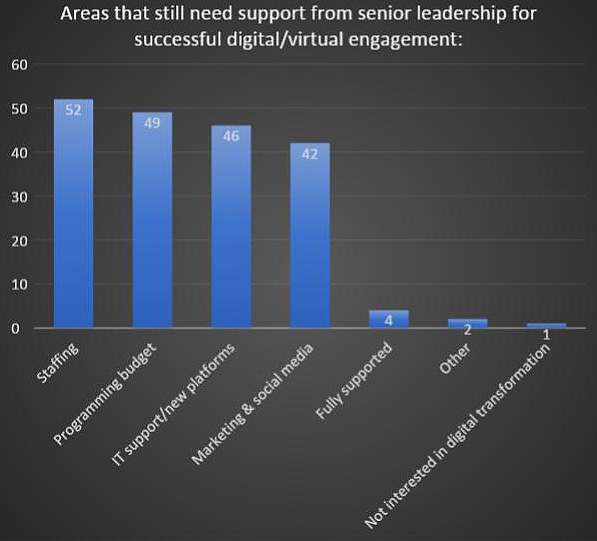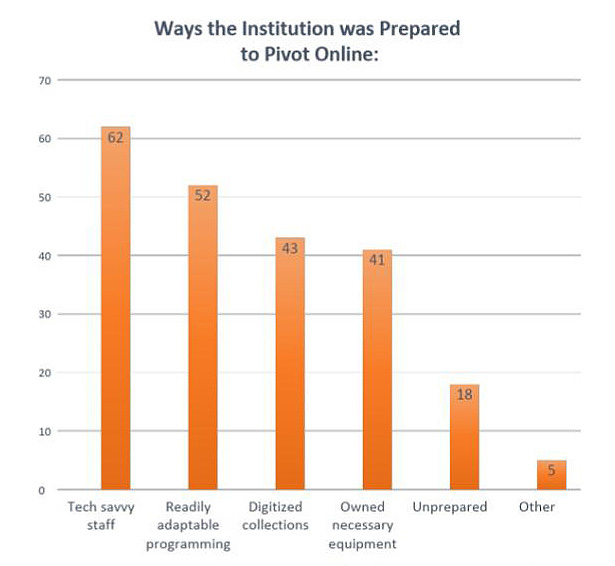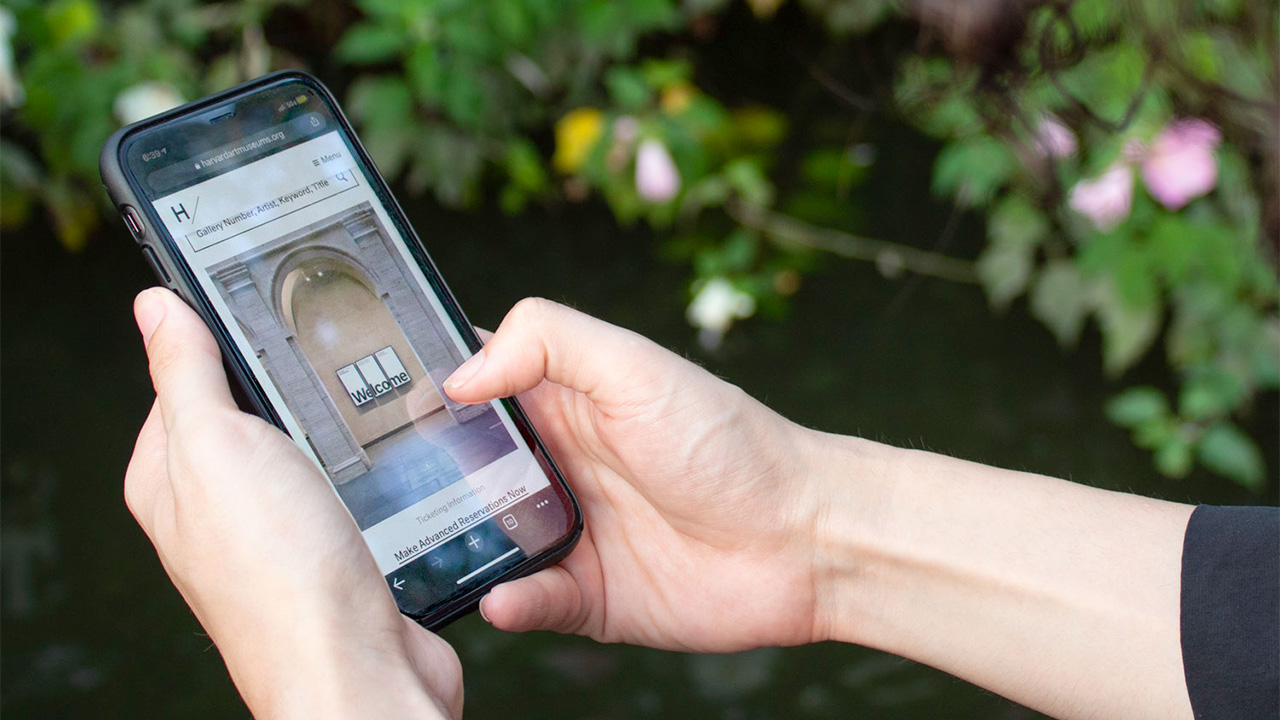The past 18 months greatly accelerated the digital strategies of many museums, but as lockdowns have lifted, how might these same institutions go about sustaining that digital momentum? At their recent panel at MCN 2021 Virtual, Program Director of Museum Studies at Harvard University Extension School, Katherine Jones, and research assistant, Kathryn Petterson, honed in on that question, presenting findings from their two-part survey, Digital Transformation in Museums.
Conducted between May to June 2021 and August to September 2021, the research focused on how small to mid-sized museums in New England, the Southeast, and the Mid-Atlantic adopted technology throughout the pandemic and where they’re digitally situated now.
In Jones and Petterson’s findings, while the majority of respondents reported offering virtual, online, and/or digital content during lockdowns, the later survey found that only 39 percent of participants were “going strong with digital programming,” while 54 percent had reduced their digital offerings and 7 percent had ceased their digital output entirely. Only half of respondents monetized their virtual programs, charging between $5 to $10, with some institutions only accepting donations.

In the second survey, participants cited staffing, programming budget, and IT support as key areas where leadership support is needed to sustain their digital momentum. Image: © Katherine Jones and Kathryn Petterson
“Based on our second survey, I wonder if museums will continue to monetize and be as digital as they were because of the monetization issue,” Jones tells Jing Culture & Commerce. “We’ve seen a withdrawal of support from the leadership as [museums] open up again, and you know, they love their onsite programming.”
For respondents to sustain their digital engagement, according to the second survey, more leadership support in the areas of programming budgets, staffing, and tech expertise are needed. This would help build on digital formats including virtual field trips and virtual galas that have proven successful. Below, Jones and Petterson share more about their findings.
What are some museums and institutions that are leading when it comes to digital transformation?
Jones: Larger museums have an edge because they already had information and infrastructure to draw from, like a collections database. Kate and I heard from the Harvard Art Museum that they were able to pivot very quickly because a renovation they did a few years ago that allowed them to digitize much of their collection. I’m sure the Cleveland Museum of Art and other big names would have an edge, but there’s also some smaller [museums] that really did a lot.

Responses to the first survey found that existing digital assets, versatile programming, and tech-savvy staff were key to helping participating museums pivot online. Image: © Katherine Jones and Kathryn Petterson
Could you share any examples of how small museums have made digital pivots?
Jones: I think educators were really wonderful at making that pivot, sometimes using their own iPhones, or other equipment, training themselves to do video and to teach the programs they were teaching on-site online. For example, having curbside pickup for K through fourth grade at the Waterworks Museum in Chestnut Hill, Massachusetts. [Students] would pick up a box [at the museum], and they and their parents would go online and participate in the programming.
For museums with limited technology experience, what do you suggest they do to better incorporate technology into their programs or operations?
Jones: For small museums, there could be some success in just learning from YouTube videos. For larger museums, they need to continue developing and use the information infrastructure they’ve created. I saw such cleverness from small museums that if they continue, they could make [digital] work.
Petterson: The difficult part is educators aren’t always ready to jump into the digital world. And it’s not usually their full-time job to do digital. One of the difficult parts is having the time to do everything in person, and also put it online or do some hybrid variation.



